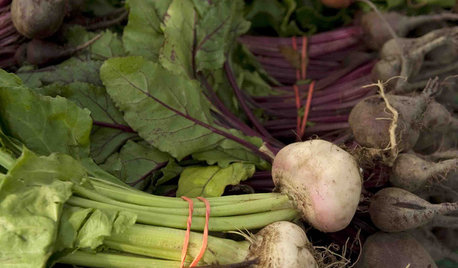Fermenting seeds?
lucillle
10 years ago
Related Stories

FALL GARDENING7 Reasons Not to Clean Up Your Fall Garden
Before you pluck and rake, consider wildlife, the health of your plants and your own right to relax
Full Story
HEALTHY HOME12 Ways to Set Up Your Kitchen for Healthy Eating
Making smart food choices is easier when your kitchen is part of your support team
Full Story
GARDENING GUIDESTop 12 Summer-Blooming Perennials for Deer-Resistant Drama
Can you have garden color, fragrance and exciting foliage with hungry deer afoot? These beauties say yes
Full Story
MOST POPULARHow to Get Rid of Those Pesky Summer Fruit Flies
Learn what fruit flies are, how to prevent them and how to get rid of them in your home
Full Story
GARDENING GUIDESBackyard Birds: Invite Entertaining Hummingbirds Into Your Garden
Hummingbirds — unique to the Americas — zip through open landscapes seasonally or year-round. Here’s how to attract them
Full Story
FARM YOUR YARDIf You Have Room for Only One Summer Crop ...
Get an edible that’s long on flavor even if you’re short on space, with a long-time gardener’s favorite picks
Full Story
FARM YOUR YARDCool-Season Vegetables: How to Grow Beets
Give canned versions of this fall and spring garden favorite the heave-ho and discover its true flavor and colors
Full Story
LIFEIs Cabin Fever Real? Share Your Story
Are snow piles across the U.S. leading to masses of irritability and boredom? We want to hear your experience
Full Story
GARDENING GUIDESGreat Design Plant: Honey Locust Tree
No, it doesn't actually produce honey. But its dappled light and tolerant nature are treats in city and country settings alike
Full Story
LIFEHow to Outsmart Backyard Critters
Learn to think like a raccoon, skunk or squirrel to keep your home safe and your garden intact
Full StorySponsored
More Discussions






lgteacher
digdirt2
Related Professionals
New Bedford Landscape Architects & Landscape Designers · Comstock Park Landscape Architects & Landscape Designers · Cupertino Landscape Contractors · Flagstaff Landscape Contractors · Natick Landscape Contractors · San Benito Landscape Contractors · Yukon Landscape Contractors · Dothan General Contractors · Florida City General Contractors · North Lauderdale General Contractors · Olney General Contractors · Rocky Point General Contractors · Torrington General Contractors · Troy Decks, Patios & Outdoor Enclosures · West Chester Decks, Patios & Outdoor Enclosuresseysonn
fcivish
monet_g
fcivish
monet_g
fcivish
digdirt2
lucillleOriginal Author
ABlindHog
digdirt2
seysonn